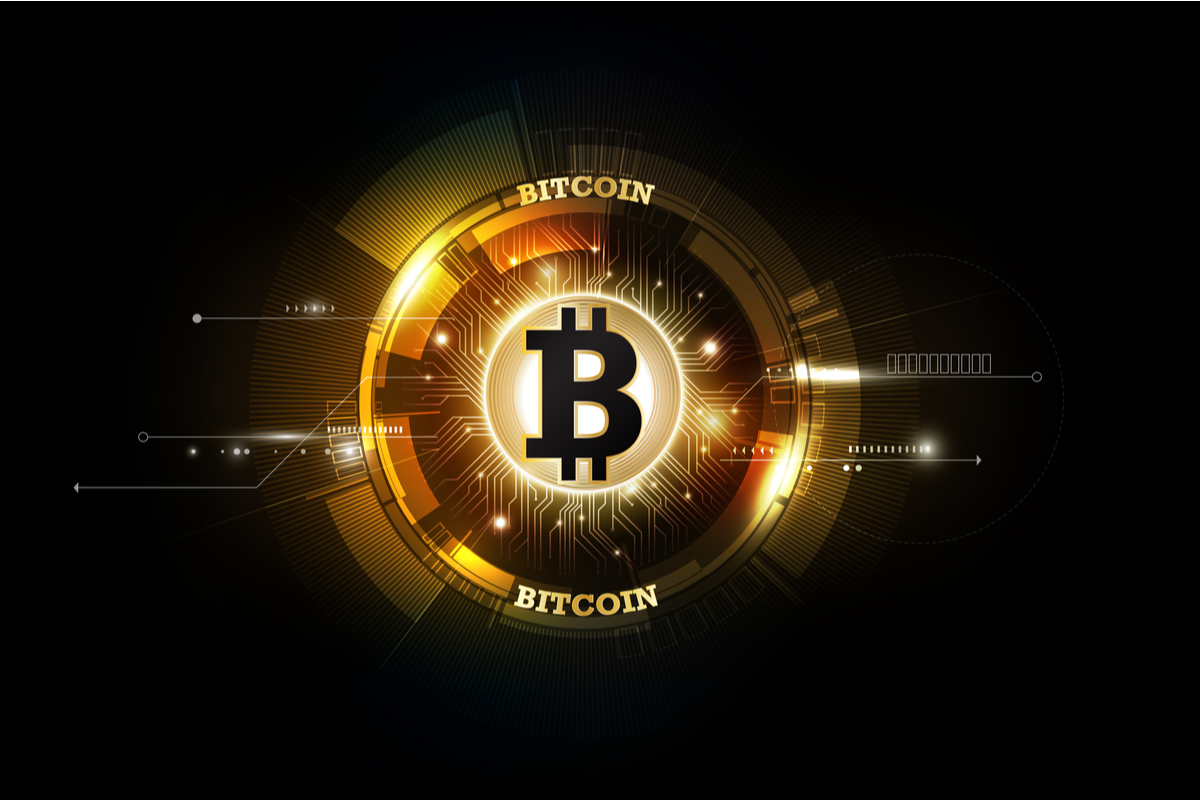Bitcoin’s Fixed Money Supply Is a Weakness
Consider the following peculiar subculture within the circle of people who think and talk about cryptocurrency. I’m speaking of the “Bitcoin maximalists,” who preach that Bitcoin is not simply about the introduction of private production and competition to today’s monetary regime.
BTC, “Bitcoin Classic,” say the maximalists, is inevitably bound for global monetary dominance. Why is this? In a long piece on Bitcoin volatility at Coin Savage, a cryptocurrency news and analysis site, Parker Lewis recently wrote that “Bitcoin is valuable because it has a fixed supply and it is also volatile for the same reason. The fundamental demand driver for Bitcoin is in its scarcity.”
Fixed supply and the still relatively small market cap of Bitcoin (“it’s early days!”) have become the standard responses to the challenge that Bitcoin’s dollar price is much too volatile for serving the purposes its proponents assign to it. Right now, it’s not a very good medium of exchange or store of value (or payment mechanism), but it will be soon enough. It’s scarce and in fixed supply — which, Lewis maintains, also explains its volatility.
The arguments come up a lot, even among otherwise smart commentators. For instance, vocal Bitcoin proponent Saifedean Ammous, the author of The Bitcoin Standard, writes:
For the first time, humanity has recourse to a commodity whose supply is strictly limited. No matter how many people use the network, how much its value rises, and how advanced the equipment used to produce it, there can only ever be 21 million Bitcoins in existence. There is no technical possibility for increasing the supply to match the increased demand.
This is almost a trivial statement. Anything fetching a positive market price must come in limited supply; there is no reason to trade goods and services that come in unlimited supply, and — insofar as they exist — they would be wholly unsuited to fulfill the functions of money. The question for monetary regimes becomes precisely by how much ought the money stock to fluctuate. Contrary to what maximalists believe, Bitcoin’s fixed supply is its major drawback to becoming the world’s preferred money, especially so if it is not accompanied by fractional-reserve Bitcoin banks.
Everything Has a Strictly Limited Supply
A Rembrandt painting, particular baseball cards, and first editions of The Wealth of Nations are all unalterably limited in quantity — provided, of course, that the baseball card–issuing company does not issue more cards. Their supply, like that of Bitcoin, will never ever increase beyond their current quantity. Admittedly, we may be able to produce close substitutes, but they would be — like so-called ”shitcoins“ — inferior substitutes that can never replicate the real deal.
They are still hopeless as media of exchange. Money, in Menger’s specification, is the ”most saleable item“, the good with the deepest secondary markets. That means a no-questions-asked criterion and Alchian-style relatively low cost of transacting; it means a strong conviction that almost any other actor in the marketplace will accept it and that its purchasing power won’t suddenly jump between day-to-day acceptance and consumption — not, mind you, between acceptance today and consumption in 30 years’ time. For this purpose, we can more productively keep our savings in other assets than money. There is no presumption that whatever object is most limited in supply makes the best money. There are trade-offs across many dimensions, and there is no requirement that for something to excel at fulfilling the functions of money it must be limited.
Something Has to Give
In contrast to most Bitcoin maximalists, Lewis understands that in a world of fundamental uncertainty, fluctuations have to be accommodated somehow. Bitcoin’s dollar price is volatile, he argues, because it has a fixed supply (a dubious conclusion; unstable and speculative money demand seems a more likely culprit). And this is precisely the problem with Bitcoin as a monetary regime: shocks, randomness, seasonal variations, or changes to how much cash people wish to hold produce stress on any monetary system. How well that system copes with such shocks determines how well it operates as a monetary regime.
There are roughly three ways in which such fluctuations of the world can be absorbed: changes in (1) money supply, (2) prices of goods and services, or (3) exchange rates. If all (or even one of them) can fluctuate reasonably well, shocks and seasonal changes to money holding are appropriately offset. Relative prices may change, but the economy still functions — we still get the goods.
-
Money supply
This is how modern central banking systems as well as various historical gold standards cope with changes in our willingness to hold cash. Under an inflation-targeting fiat regime, the central bank provides as much currency as is demanded by the public given its nominal target; for instance, during Christmas the Fed increases currency in circulation and similarly contracts it after the holidays. Under the classical gold standard, economic growth and an increased transactions demand for money was satisfied in the short run by reserve banks issuing more notes and in the long run by gold miners extracting more gold, expanding the base money supply.
It could take years for gold miners to explore and satisfy an increased demand for holding money. Miners only increased production when the purchasing power of gold increased, and so goods prices had to fall first — and even then it would take time to deliver to market. Monetary regimes with relatively rigid base money supplies could instead use inside money (privately issued bank liabilities) for faster and more direct equilibration; when customers wanted to hold more cash, fractionally reserved banks could issue notes. That’s an obvious solution for Bitcoin as well, but it is resisted for ideological reasons; most Bitcoin maximalists are vehemently opposed to fractional reserve banking. It’s immoral, illegal, inefficient, causes crises, and won’t stand the market test, they say. None of which is true.
-
Prices of goods and services
If money supply is not permitted to change in response to fluctuations in the economy, “real” adjustments can take place. Prices, then, have to do all the “heavy lifting,” as Al Roth would say. The problem for a modern economy is stickiness: for a variety of reasons, regular people prefer stable arrangements — and dislike indexation. We don’t like having our wage rates, rents, or mortgage payments fluctuating with short-term changes in supply and demand. We like things to be predictably rigid — which explains why we enter into long-term contracts for a sizeable portion of our expenditures (housing, for example) and most of our incomes (employment contracts). Retailers may also avoid inconveniencing their customers (and staff) by frequent price changes.
If prices are sticky, then prices of goods and services cannot adjust very well to fluctuations. There is no reason to believe that this would change under a global Bitcoin monetary regime.
-
Exchange rates
For small open economies, a lot of international shocks and monetary or financial fluctuations are adjusted through the exchange rate. While there is price stickiness for goods and services, exchange rates in currency markets can adjust very quickly and assist in accommodating fluctuations that were too large or too fast for (2) to accomodate.
As Bitcoin aspires to be a global rather than national currency, economies largely conducted in Bitcoin would no longer have the option to accommodate fluctuations through the exchange rate. The observed price volatility today is the dollar price of Bitcoin (that is, an exchange rate), a channel that would not be available in a Bitcoin-conquered world (the “exchange rate” between one Bitcoin and another equals 1). Besides, it seems likely that most of Bitcoin’s dollar-price fluctuations are due to highly unstable and speculative demand, rather than being merely a consequence of its limited supply, as Lewis claims.
All three major channels for Bitcoin to adjust to changes in financial conditions and money holdings seem effectively closed off. Insofar as we keep resisting indexation and keep engaging in nominally fixed contracts over medium to long terms, Bitcoin as a monetary regime is out of luck. Real-world fluctuations — in demand, supply lines, money demand, and financial markets — would require significant quantity adjustments in a world of Bitcoin money; nothing else is left to fluctuate. Disequilibrium is virtually guaranteed. Every market is dysfunctional. Far from being the monetary utopia its proponents envision, a world of Bitcoin maximalism — which is merely a reinvention of monetary central planning using privatized digital currency — would lead to monetary chaos. And that is precisely why it could not possibly survive a genuine market test in a world of genuine monetary competition. People wouldn’t go for it.
The obvious solution for Bitcoin’s major flaw as a monetary regime is fractional reserve banking, but that is categorically rejected by most Bitcoin maximalists on ideological grounds. In their desire to decentralize the world’s monetary system, there is an awful lot of top-down planning — possibly substituting one failed system for another.
The great takeaway from the cryptocurrency experiments of the last 10 years should be apparent to any economist. The successes of Bitcoin demonstrate that private money in a digital age is possible. This new opening provides an exciting template for the future. We no longer — not that we ever did — need depend on state production and planning to manage our monetary systems. The market itself can manage money the same as it does any other good or service. We’ve even observed how the cryptocurrency push has put pressure on mainstream financial technology to improve, and dramatically so. This is precisely how competition is supposed to work. Finally, Bitcoin has given us a glimpse into what the future could look like should the market fully regulate the production of money.
This is the brilliant contribution of the great monetary experiment that is cryptocurrencies and financial technology. What is not warranted is the forging of a rationalistic blueprint where Bitcoin Classic and nothing else — unaltered, exactly as formed — becomes the one, the only, and the inevitable basis for all future money. Everything about monetary theory would suggest otherwise. What is it about markets that even Bitcoin’s most dedicated fans do not understand?
Hayek should have the last word. In his 1976 essay The Denationalisation of Money, frequently cited by maximalists, he wrote:
We indeed begin to see how completely different an economic landscape the free issue of competitive currencies would produce when we realise that under such a system what is known today as monetary policy would neither be needed nor even possible.… A single monopolistic governmental agency can neither possess the information which should govern the supply of money nor would it, if it knew what it ought to do in the general interest, usually be in a position to act in that manner.
What goes for a single monopolistic governmental agency pertains also to enthusiastic Twitter warriors predicting that Bitcoin will soon own the world.











